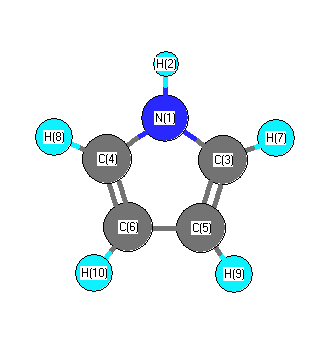.
| squib |
reference |
DOI |
| 1966Herzberg |
Herzberg, G., Electronic spectra and electronic structure of polyatomic molecules,Van Nostrand,New York, 1966 |
|
| 1969Nyg/Nie:491 |
Nygaard, Nielsen, Kirchheiner, Maltesen, Rastrup-Andersen, Sorensen, Microwave Spectra of Isotopic Pyrroles. Molecular Structure, Dipole Moment, and 14N Quadrupole Coupling Constants of Pyrrole, J. Mol. Sturct., Vole 3, pgs. 491-506 |
10.1016/0022-2860(69)80031-1 |
| 1971Fly/Ben:225 |
WH Flygare, RC Benson "The molecular Zeeman effect in diamagnetic molecules and the determination of molecular magnetic moments (g values), magnetic susceptibilities, and molecular quadrupole moments" Mol. Phys. 1971, 20 (2), 225-250 |
10.1080/00268977100100221 |
| 1998Gus/Rui:163 |
M Gussoni, R Rui, G Zerbi "Electronic and relaxation contribution to linear molecular polarizability. An analysis of the experimental values" J. Mol. Struct. 447 (1998) 163-215 |
10.1016/S0022-2860(97)00292-5 |
| 2001Mel/Lie:239 |
A Mellouki, J Lievin, M Herman "The vibrational spectrum of pyrrole (C4H5N) and furan in the gas phase" Chem. Phys. 271 (2001) 239-266 |
10.1016/S0301-0104(01)00447-5 |
| NSRDS-NBS10 |
R. D. Nelson Jr., D. R. Lide, A. A. Maryott "Selected Values of electric dipole moments for molecules in the gas phase" NSRDS-NBS10, 1967 |
10.6028/NBS.NSRDS.10 |
| TRC |
Frenkel, M; Marsh, K.N.; Wilhoit, R.C.; Kabo, G.J.; Roganov, G.N.,Thermodynamics of Organic Compounds in the Gas State,Thermodynamics Research Center, College Station, TX, 1994 |
|
| webbook |
NIST Chemistry Webbook (http://webbook.nist.gov/chemistry) |
10.18434/T4D303 |












